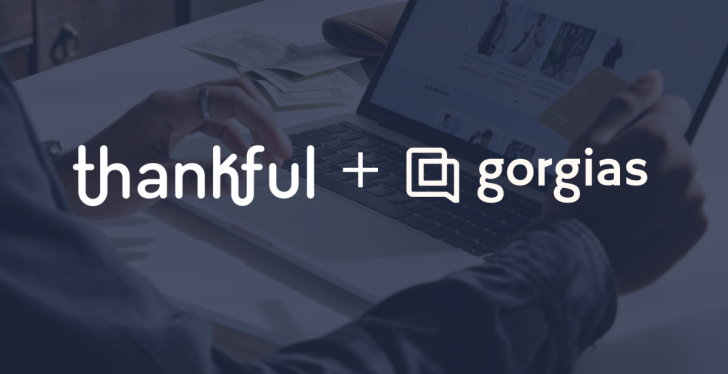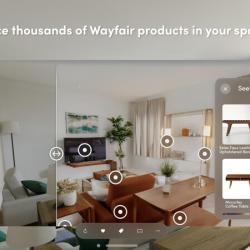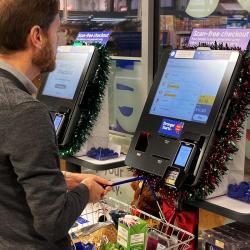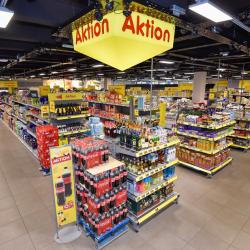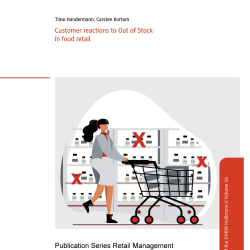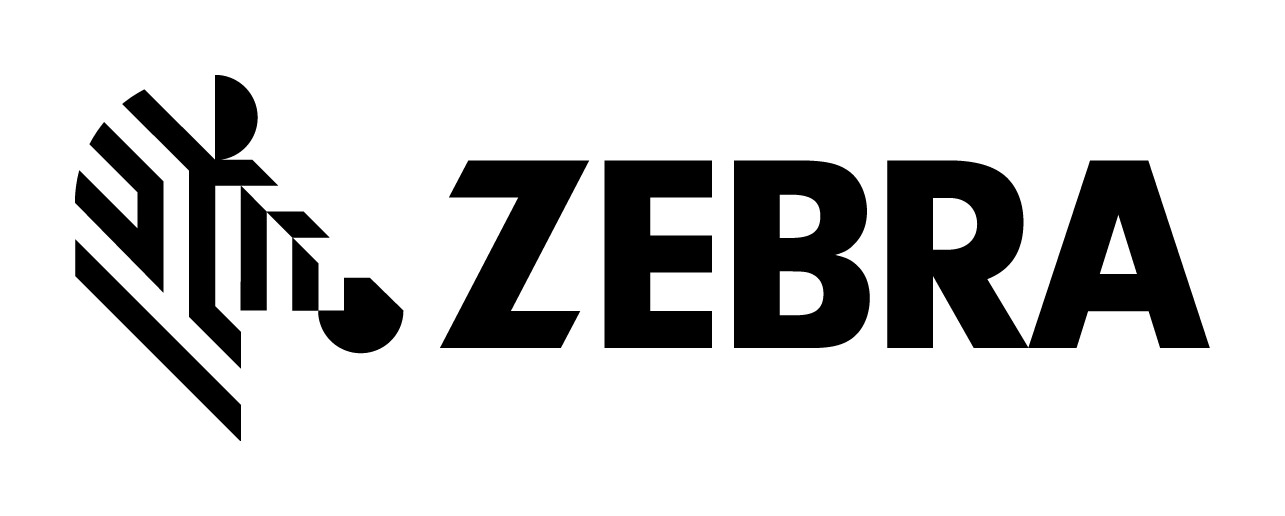Missed opportunities: Challenging online shopping
Accessible websites generate sales

First, the good news: technically, there should only be winners when it comes to this subject. Providers of accessible websites service the largest possible group of customers and generate the most sales. However, many people need to overcome obstacles in using most websites. This means all parties lose – both the webshop operators and users.
When British citizen Rick Williams wants to shop online, he usually visits his favorite website of a certain online supermarket. On the one hand, that’s because he finds everything he is looking for here and on the other because he doesn’t encounter technical problems on this website – unlike many others out there. Since he is blind, he uses a screen reader to surf which reads the contents out loud to him. ”If a page is not easy to read, I quit and search for another website, if possible,“ he explains. He is one of the many users with disabilities who are not able to use a computer conventionally.
Rick is the Managing Director of Freeney Williams Ltd. and a consulting member of the Business Disability Forum. He checks websites for their web accessibility. He found out that approximately 70 percent of these websites are not fully accessible to people with disabilities. The bad news: “Even after we told providers that their pages are not accessible, most of them chose not to change anything about it,” he critiques.
This is why he and his partners launched the "Click-Away Pound" user survey in January of this year. Rick states the objectives. ”The study aims to point out to retailers that they risk losses in sales transactions and harmful PR if they don’t create barrier-free services and to motivate them to finally take appropriate action.“ One important interim result: ”Aside from confirming that most users with disabilities leave bad websites, they also frequently appear to spend more for products than customers without disabilities. Simply because their choices are limited by bad websites.“
What bothers the dedicated Brit in particular is that international standards for website accessibility have actually been around for quite some time but English companies are not being prosecuted if they do not comply with them. The standards of the Web Content Accessibility Guidelines (WCAG) V2.0 and the laws promoting equality for people with disabilities state that websites should be accessible to all users, regardless of whether they have a physical, cognitive or language disability and regardless of the assistive technology they use to read the page.
In Germany, websites at the federal level need to be accessible to everyone according to the Federal Ordinance on Barrier-Free Information Technology (“Barrierefreie-Informationstechnik-Verordnung, BITV 2.0). This is also scheduled to become gradually more mandatory at the state and communal levels. However, web accessibility is not legally required for websites of private companies and, therefore, easy to ignore by most.

Web accessibility not in the retailer mindset
”Most providers have never dealt with web accessibility and don’t know about its advantages,“ explains Heike Clauss, project manager of ”BIK für Alle“ (English: Web accessibility for everyone). This project of the ”Web Accessibility in Business and Commerce“ series is sponsored by the Federal Ministry of Labour and Social Affairs and runs from early 2015 until late 2018. The goal: educating companies in the private sector about the importance of accessible websites and evaluating websites for accessibility.
The project manager points out, “Accessible websites are not just important for blind persons but for many target groups. Visually impaired customers need to be able to increase the font size and achieve a high degree of contrast. If you are not able to grab a computer mouse due to spasticity, you need a site that is operable through a keyboard interface. Hearing impaired users need sign language or captions in videos. Last but not least, plain language without complicated sentences and countless foreign words is not just extremely helpful for people with learning or cognitive disabilities but also for non-native speakers.“ Senior citizens also prefer websites that are easy to navigate.
This alone shows that companies and their online services are simply not accessible to a large number of potential customers. The losses in sales and the drawbacks for users are unfathomable.
Technical requirements: what makes a website accessible?
The requirements for accessible websites pertain to the way they are programmed and how their content is managed. That means, the CMS matrix (Content Management System – meaning the editing system – the virtual building blocks as it were, into which content is being incorporated) needs to be programmed so every end device, assistive technology or browser is able to easily navigate this structure. In short, the HTML language used to program the website needs to be easy to read.
Headers, paragraphs and charts, for example, need to be well identified. ”Mainly because the user does not want to have the entire page read to them but should be able to also skip directly to other content,“ explains Sonja Weckenmann who tests websites by providers for BIK. Editors and authors should also know how they can use well-structured web content and alternative texts as well as captions.
Incidentally, when all web elements are neatly identified, not only people with disabilities but also online search engines are able to better find them online. This should be an added incentive, especially for those retailers who present themselves and their merchandise online. A marketing aspect that can easily increase their customer base.
”If the law is not able to motivate them to change things and consider customers with disabilities, perhaps the numbers are able to do it.“ (Rick Williams)

Identifying how accessible your website is
There are several ways to test websites for accessibility: one way is to seek the help of an expert – like Rick Williams or the BIK team for example. BIK also awards a seal of approval for those pages that score more than 90 out of 100 points in the test. These tests cost money. On its website, BIK also offers a free self-assessment with 50 questions everyone can use to assess their website.
Having said that, Rick Williams also believes it’s especially important to not only test websites for accessibility standards but also in terms of usability, meaning their ease of use. He points out that “web accessibility is not the same as usability, but both are equally important. Companies should be aware of this. A website can meet all of the WCAG 2.0 requirements but still be difficult to navigate for users. This is why people with different types of disabilities, different devices and assistive technologies should always test these websites – ideally, independent from developer and provider - and do so during each phase of development. This also reduces effort, saves time and money and is the best way to prevent potential barriers.“
This statement essentially describes the easiest way to achieve an accessible design for a website: namely by working on it right from the start. In doing so, there is usually not much more expense involved. In contrast, retrofitting and making a website more accessible afterward is always more expensive and sometimes not even possible. The more complex a website is, the harder it becomes. Although you can easily improve individual elements, others are best achieved with a website relaunch. If you keep testing for access barriers from the start of development, the changes can already be incorporated into the structure and don’t need to be corrected in a time-consuming and cost-intensive manner.
A critical point for webshops are the payment options that are added later on and are often not accessible. ”Providers should verify that payment solutions are actually accessible to everyone.“
The website provider is responsible
The rule of thumb is, the provider is responsible for the contents of his/her website and therefore also for its accessibility. He should determine which standard a CMS provider should meet. It also needs to be determined who should test the website and what results the tests should provide. This is the only way to ensure continuous web accessibility. ”It pays off to choose developers who are well experienced with accessible websites,“ concludes Weckenmann.
Meanwhile, her colleague Heike Clauss hopes for an increase in accessibility and higher levels of awareness in private businesses. “Ten years ago, web accessibility was still a hot topic and many projects addressed this issue. Then things stagnated for quite a while. Now we feel that the demographic change and the subject of inclusion support our work.“ A great prerequisite for retail to also recognize the added benefit of a good website.
channels: online trading, customer satisfaction

